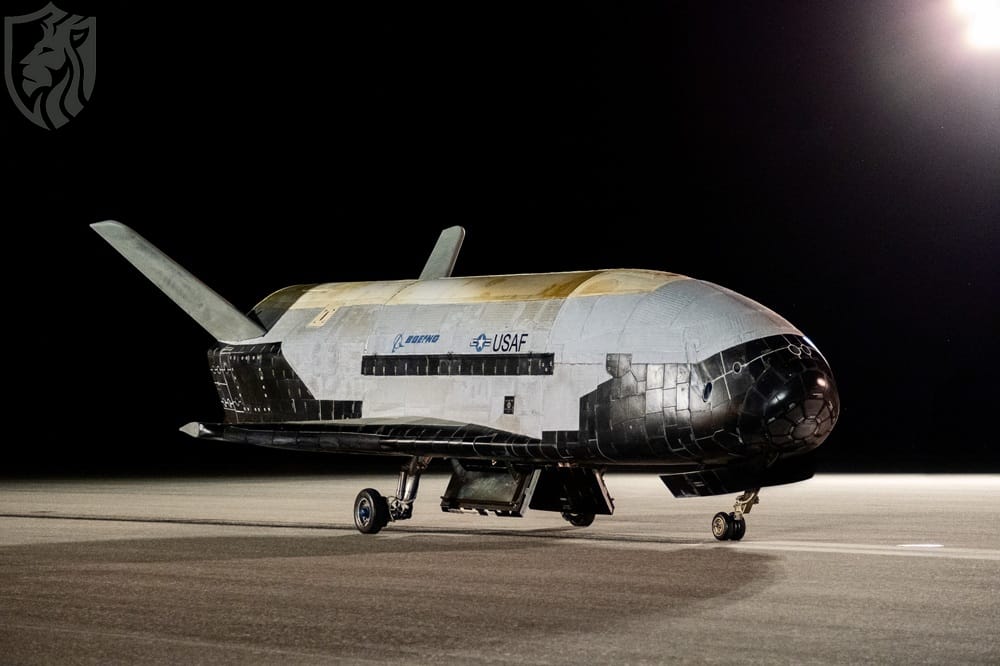
X-37B Spaceplane
The United States Space Force will launch the eighth X-37B spaceplane mission next month, which will include advanced experiments in quantum sensing and space-based communications.
Boeing continues to construct this reusable, uncrewed spaceplane as a critical testbed for the U.S. military’s orbital innovation initiatives.
Kennedy Space Centre in Florida will serve as the launch site for the forthcoming mission, which will be overseen by the Fifth Space Operations Squadron in collaboration with the Space Rapid Capabilities Office.
As per Chief of Space Operations Gen. Chance Saltzman, this launch is consistent with the overarching objective of establishing a space force that is both agile and resilient, capable of confronting future threats throughout the orbital domain.

Quantum Sensing to Revolutionise Navigation in the Absence of GPS
One key mission focus will be a quantum inertial sensor, described by the Space Force as the most capable in space. This sensor enables precise navigation in areas where GPS is unavailable. It is crucial for contested orbital and cis-lunar operations.
Laser Communications for the Protection of Orbital Data Transfer
The X-37B spaceplane mission will also provide support for experiments in laser-based communications, in addition to quantum navigation. The objective of this system is to significantly enhance the security of transmission and data throughput in comparison to the capabilities of conventional radio frequencies.
It is important to note that the experiment will interact with commercial satellite constellations in low Earth orbit (LEO), which are located at altitudes of approximately 1,200 miles.
This collaboration highlights the increasing convergence of military and commercial space capabilities in pursuit of a distributed, fault-tolerant satellite architecture.
Increasing Resilience Through the Use of Proliferated Networks
The Space Force emphasised that using proliferated relay networks would decrease dependence on a single communication node.
This architectural approach is essential for maintaining continuity during kinetic threats that target satellites or electronic warfare. The X-37B spaceplane mission validates this concept through real-time orbital experimentation.
Moreover, Gen. Saltzman stressed the importance of improving space-based connectivity and resilience to preserve strategic dominance: “It is about ensuring that our joint force is more connected and prepared to operate in the presence of any challenge.”

Continuing the Legacy of the X-37B Programme
The X-37B spaceplane has become one of the Pentagon’s most valuable assets for space experimentation since its introduction in 2010. Recent missions have offered a glimpse into its function, although a significant portion of its work remains classified.
The previous flight, which lasted 434 days, was returned in March of this year after successfully demonstrating aerobraking maneuvers that enabled orbital adjustments and conserved fuel.
The program’s semi-classified status prevents the disclosure of the precise duration and comprehensive manifest for this eighth flight. Nevertheless, the X-37B’s significance in preparing the Space Force for future orbital conflicts and deep-space missions is underscored by the mission’s primary emphasis on secure communications and cutting-edge sensing.
Conclusion: A Strategic Advance Towards Space Superiority
With its imminent flight, the X-37B spaceplane mission will continue to expand the technological frontiers of space-based military operations. This flight demonstrates how the United States is constructing the necessary tools for strategic dominance beyond Earth while adapting to an evolving threat landscape through the testing of quantum sensors and laser communications.








